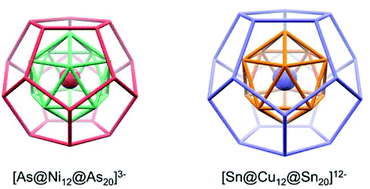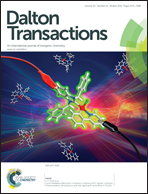Abstract
We have provided a model for understanding two isoelectronic matryoshka clusters, [Sn@Cu12@Sn20]12− and [As@Ni12@As20]3−. By dividing each of the clusters in a layer-by-layer manner and allowing each layer to follow a simple electron-filling rule, we can formulate a consistent model to explain experimental and computed properties of both matryoshka clusters that cannot be adequately explained by existing models. By analysing these clusters in a way analogous to peeling an onion, we can not only have an understanding of the structure and bonding of the two matryoshka clusters under study, but also have a generalizable model to handle certain p/d-block@d-block endohedral clusters.

- This article is part of the themed collection: In memory of Professor Kenneth Wade

 Please wait while we load your content...
Please wait while we load your content...